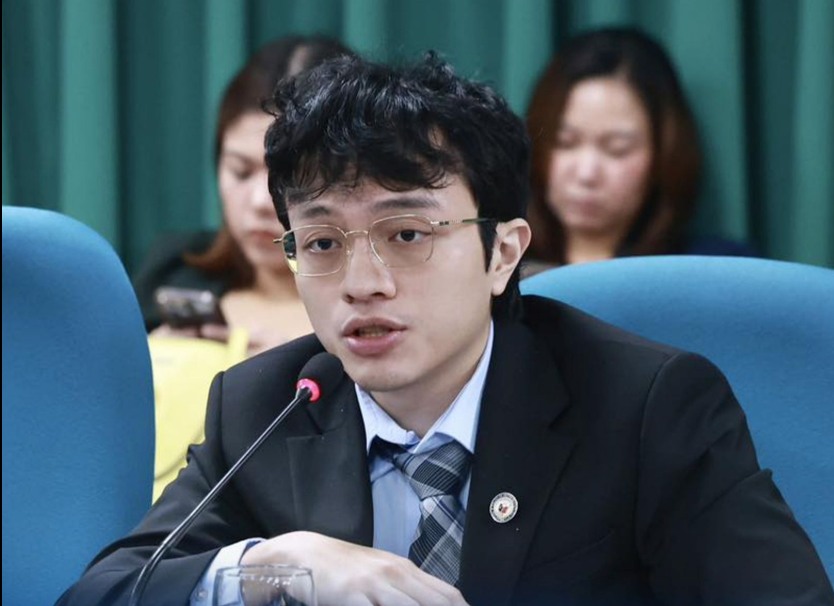Sara Zimmerman Duterte Carpio has no monopoly of the bogus as the Marcos Sr.-era land reform by way of Presidential Decree 27 is as fake as the rewards doled out by the Office of the Vice President (OVP.) The latest version of sham agrarian reform is the New Agrarian Emancipation Act (NAEA), which Marcos Jr. signed, but farmers remain landless and rural poverty persists. Of course, the worst record for land distribution came during the administration of Rodrigo Duterte, who vowed to end peasant landlessness within his term. He botched it.
To protest PD 27 and a raft of agrarian reform laws, contingents from Southern Luzon and Central Luzon are in Metro Manila to protest the absence of genuine agrarian reform under Marcos Jr. The Kilusang Magbubukid ng Pilipinas (KMP) is spearheading the action, arguing that genuine land reform is the key to address food insecurity and the worsening crisis of Philippine agriculture.
“Despite various land reform programs—from PD 27 to the Comprehensive Agrarian Reform Program, and now President Bongbong Marcos’ New Agrarian Emancipation Act (NAEA)—farmers remain landless, and rural poverty persists. The Marcos legacy remains — landlessness of the many and affluence of the few. There is no real emancipation of farmers under Marcos’ administration,” KMP chairperson and Makabayan Coalition Senate aspirant Danilo Ramos said.
Ramos maintained that there is no clearcut schedule to dispose of all privately-owned agricultural lands (PALs) that had been covered by the Comprehensive Agrarian Reform Program (CARP), with landlords paid through the Agrarian Reform Fund (ARF). However, many still retain control of the land by cutting deals with farmers organized into cooperatives that transformed them into agricultural workers. Through legal ploys and subterfuges, landlords also manage to scrap Notices of Coverage (NOCs), delay land acquisition and distribution (LAD), and prevent the surveys of PALs.
There has been a spate of disqualification cases against farmers and the reclassification of agricultural land for residential, commercial, industrial, and ecotourism purposes, with the Marcos Jr. administration also thinking of creating agricultural estates in state-owned land to lure in foreign investors and telecommunications companies that need more cell sites. With an emaciated land use scheme, local government units (LGUs) and the Department of Agrarian Reform (DAR), with a little help from the Department of Environment and Natural Resources (DENR), these plutocrats can scrap NOCs by declaring their choice tracts of land as unfit for agriculture, the KMP stressed.
Since plutocrats practically control the Marcos Jr. government, it is not surprising that landlords continue to thrive. Under Marcos Jr., the Villar political dynasty has declared 11,210 hectares for the land banking aside from the holdings of Vista Land Properties. Ramon Ang of San Miguel Corp. has 37,307 hectares of land and is kicking out the residents of 10,821-hectare Bugsuk Island in Palawan. The The Zobel-Ayala conglomerate has 25,440 hectares for land banking along with other Ayala Land Inc. properties. The Consunji family that controls DMCI has 102,954 hectares for logging across Mindanao and 6,600 hectares of oil palm plantation expansion in Negros aside from land in Lake Sebu, South Cotabato, the culture center of the T’boli indigenous people. Haciendas and agri-corporation plantations covering more than 150,000 hectares, and big landholdings are intact while farmers remain landless, Ramos disclosed.
Ramos said farmers will again declare Bongbong Jr as the leading cause of hunger in the country, which has been buffeted by persistent rice and food inflation. The Philippines is the world’s top rice importer after China, and projections show this trend will continue until 2025. Protesters will call for genuine land reform, and disaster compensation for farmers affected by El Niño and La Niña which accumulated billions in damages to agriculture and crops. KMP and Tanggol Magsasaka will also demand a stop to the de facto Martial Law in peasant communities, which has resulted in widespread rights abuses. Data from rights network Tanggol Magsasaka reveal that 72 out of the 105 victims of extrajudicial killings under Marcos are farmers, with most victims from Masbate and Negros. Majority of the 755 political prisoners in the country are farmers.
Farmers also presented their 12-point Peasant Agenda for the 2025 midterm elections, challenging politicians whose policies have worsened the condition of farmers. An 8-foot effigy of an embossed map of the Philippines symbolizing land monopolies and political dynasties highlighted the youth advocates’ participation in the rally. The action capped a month-long series of events for October Peasant Month and will signal the start of the campaign to demand justice for the 20th year of the heinous Hacienda Luisita Massacre. Pickets were held at the DAR, DA, DENR and the National Commission on Indigenous Peoples (NCIP.) Protests were also held in Tuguegarao City, Cebu City, Iloilo City, Bicol, La Union, Ilocos, and the Negros provinces. Filipinos and compatriots abroad also marked Oct. 21 as the Global Day of Action for Solidarity with Peasants.




